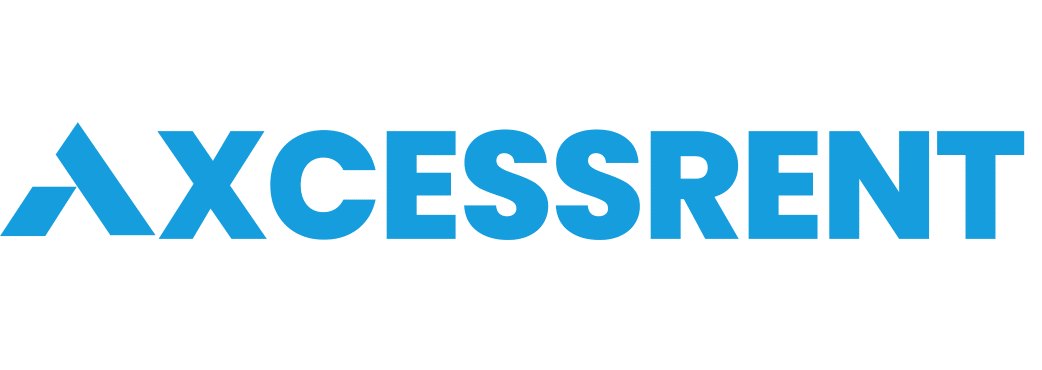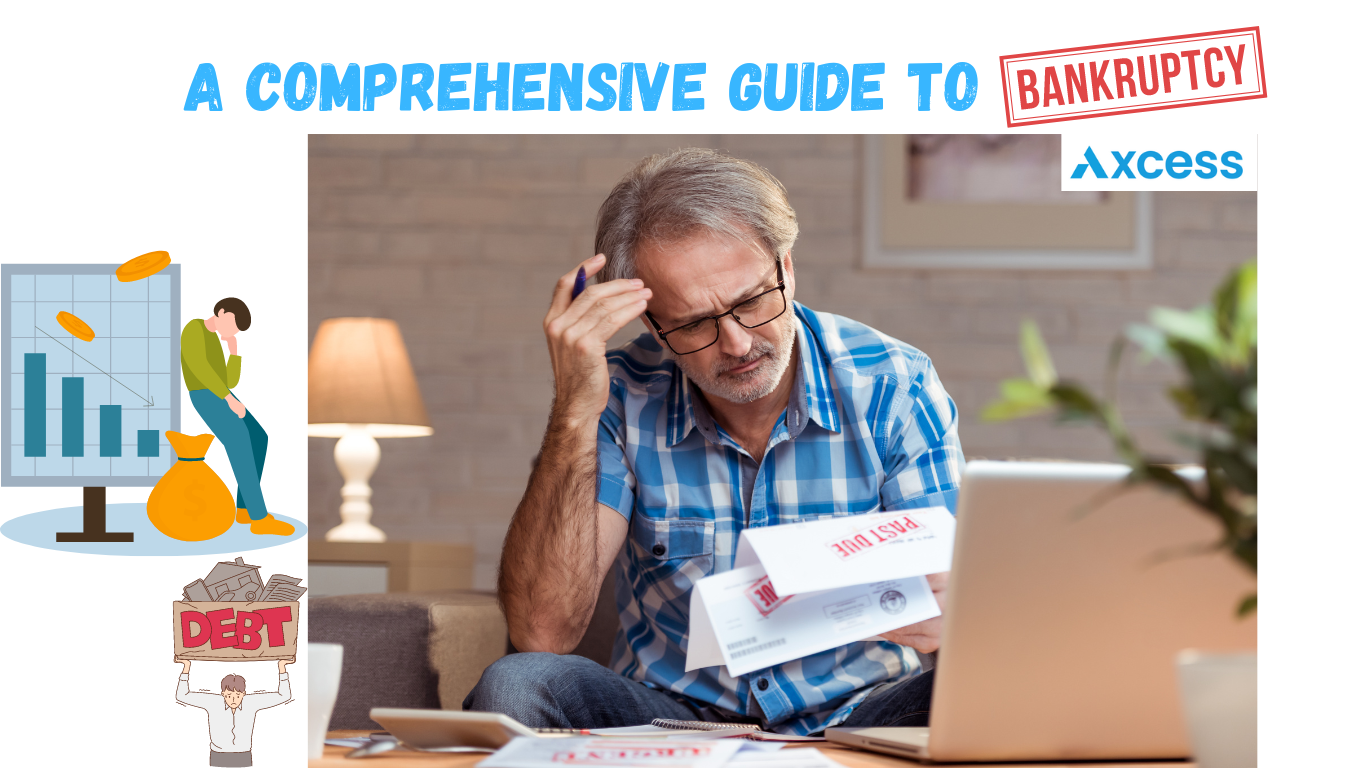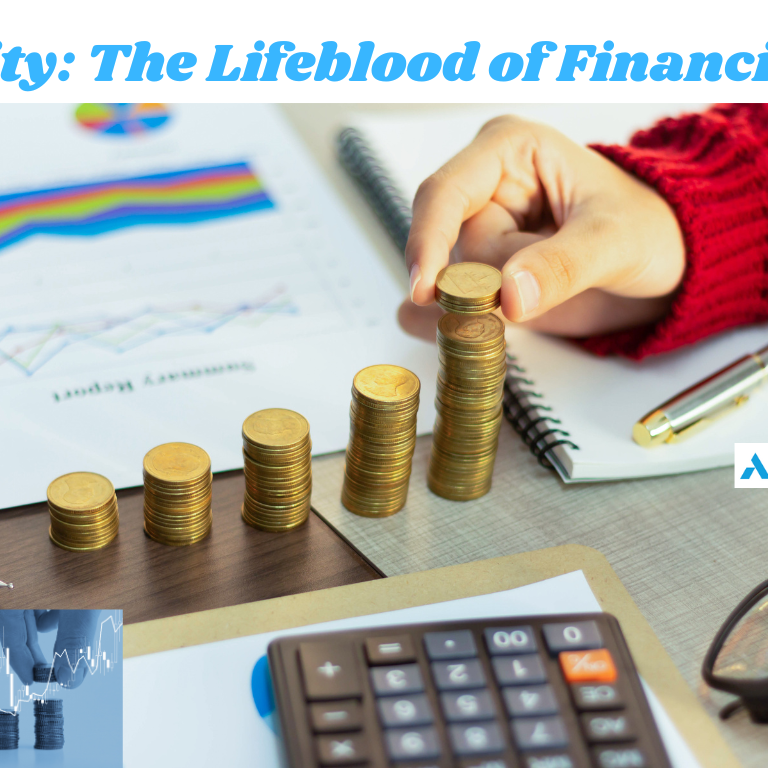A Comprehensive Guide to Bankruptcy
1. Introduction to Bankruptcy
Definition of Bankruptcy and Its Purpose
Bankruptcy is a legal process that allows individuals and businesses to manage overwhelming debt by restructuring or eliminating it. It serves as a safety net for those who are unable to meet their financial obligations due to circumstances beyond their control, such as job loss, medical emergencies, or business failures. The primary purpose of bankruptcy is to provide a fresh start and relief from creditors, giving individuals and businesses the opportunity to rebuild their financial lives.
Overview of Bankruptcy Law and Regulations
Bankruptcy laws vary from country to country, but they generally involve specific procedures and requirements. In the United States, bankruptcy proceedings are governed by the Bankruptcy Code, which outlines different chapters for individuals and businesses.
- Chapter 7: This is a liquidation bankruptcy, where a trustee is appointed to sell the debtor’s non-exempt assets to pay off creditors. The proceeds from the sale are distributed to creditors according to their priority. However, certain assets, such as retirement accounts and necessary household items, are typically exempt from liquidation.
- Chapter 13: This is a reorganization bankruptcy primarily for individuals. It involves a repayment plan under court supervision, where the debtor proposes to repay their debts over a period of three to five years. The plan must be approved by the court and creditors. During this time, creditors are generally prohibited from collecting on the debts included in the plan.
- Chapter 11: This is primarily for businesses and involves a reorganization plan to restructure debt and continue operations. The business remains under the control of its management, but a court-appointed trustee may be involved to oversee the process. The plan must be approved by creditors and the court.
Common Myths and Misconceptions About Bankruptcy
There are many misconceptions surrounding bankruptcy. Some of the most common myths include:
- You will lose everything: In most cases, individuals can keep essential assets like a home, car, and personal belongings. The specific assets that are exempt from liquidation vary by state.
- It will damage your credit forever: While bankruptcy does have a negative impact on your credit score, it’s not permanent. With responsible financial behavior, your credit can recover over time. It typically takes seven to ten years for a bankruptcy to be removed from your credit report.
- It’s a quick fix: Bankruptcy is a complex legal process that requires careful planning and adherence to specific procedures. It can take several months or even years to complete.
Types of Bankruptcy
Chapter 7 Bankruptcy
Chapter 7 is a liquidation bankruptcy, meaning that the debtor’s non-exempt assets are sold to pay off creditors. This is typically the most aggressive form of bankruptcy, and it is often used by individuals who have little or no equity in their assets.
Chapter 13 Bankruptcy
Chapter 13 is a reorganization bankruptcy, which allows individuals to repay their debts over a period of three to five years through a court-approved repayment plan. This option is generally available to individuals with regular income and a reasonable amount of debt.
Chapter 11 Bankruptcy
Chapter 11 is primarily used by businesses to restructure their debts and continue operations. It allows the business to develop a reorganization plan that outlines how it will repay its creditors. This process is more complex than Chapter 7 or Chapter 13 and often involves negotiations with creditors.
Factors to Consider Before Filing for Bankruptcy
There are several factors to consider before filing for bankruptcy, including:
- Your financial situation: Evaluate your income, expenses, and debt to determine if bankruptcy is the best option.
- Your assets: Identify any assets that may be exempt from liquidation.
- Your credit score: Bankruptcy will have a negative impact on your credit score, so consider the long-term consequences.
- Your future financial goals: Bankruptcy can provide a fresh start, but it’s important to have a plan for rebuilding your credit and managing your finances responsibly in the future.
Alternatives to Bankruptcy
While bankruptcy may be the best option for some individuals and businesses, there are also alternatives to consider, such as:
- Debt consolidation: This involves combining multiple debts into a single loan with a lower interest rate.
- Debt management plans: These plans involve working with a credit counseling agency to develop a repayment plan.
- Negotiation with creditors: You may be able to negotiate with creditors to reduce your debt or extend your repayment terms.
2. History and Evolution of Bankruptcy
Origins of Bankruptcy Law
The concept of bankruptcy has existed for centuries, dating back to ancient civilizations. Early forms of bankruptcy laws were primarily concerned with providing relief to debtors who were unable to meet their obligations due to unforeseen circumstances, such as natural disasters, crop failures, or economic downturns.
In ancient Rome, for example, there were laws that allowed debtors to declare bankruptcy and avoid imprisonment for debt. These laws were designed to protect individuals from excessive debt and to promote economic stability. In ancient Babylonia, the Code of Hammurabi included provisions related to debt and bankruptcy, which outlined the rights and responsibilities of debtors and creditors.
Key Milestones in U.S. Bankruptcy Legislation
The United States has a long history of bankruptcy legislation, with significant milestones throughout its development. Some of the key events include:
- The Bankruptcy Act of 1800: This was the first federal bankruptcy law in the United States, but it was short-lived and was repealed in 1803 due to opposition from creditors and states’ rights advocates.
- The Bankruptcy Act of 1898: This act established a more comprehensive system of bankruptcy laws, including provisions for both individuals and businesses. It remained in effect for over 70 years and laid the foundation for the modern U.S. bankruptcy system.
- The Bankruptcy Reform Act of 1978: This act made significant changes to the bankruptcy laws, including the creation of Chapter 13 for individuals and the reorganization of Chapter 11 for businesses. It also introduced the concept of “means testing” to determine eligibility for Chapter 7 bankruptcy.
- The Bankruptcy Abuse Prevention and Consumer Protection Act of 2005: This act introduced several reforms aimed at reducing bankruptcy abuse and protecting creditors. Some of the key changes included stricter eligibility requirements for Chapter 7 bankruptcy, increased penalties for fraudulent bankruptcy filings, and limitations on the ability of debtors to discharge certain types of debt.
Global Perspectives: How Bankruptcy Laws Differ Around the World
Bankruptcy laws vary significantly from country to country, reflecting cultural, economic, and legal differences. Some key areas of variation include:
- Eligibility requirements: The criteria for filing for bankruptcy may differ, depending on the country. For example, some countries have stricter eligibility requirements for individuals, while others may allow businesses to file for bankruptcy more easily.
- Exemptions: The assets that are exempt from liquidation may vary depending on the jurisdiction. Some countries may have more generous exemptions for individuals, while others may have stricter rules.
- Repayment plans: The terms and conditions of repayment plans can also vary. Some countries may require debtors to repay a higher percentage of their debts, while others may be more lenient.
- Credit consequences: The impact of bankruptcy on credit scores can differ from country to country. In some jurisdictions, bankruptcy may have a more severe impact on credit, while in others, the consequences may be less severe.
- Cultural attitudes: Cultural attitudes towards bankruptcy can also influence the design and implementation of bankruptcy laws. In some cultures, bankruptcy may be viewed as a sign of shame or failure, while in others, it may be seen as a necessary tool for financial recovery.
3. Types of Bankruptcy
Chapter 7: Liquidation Bankruptcy
- Who Qualifies and How It Works: Chapter 7 is generally available to individuals and businesses that meet certain income requirements. The debtor’s non-exempt assets are sold to pay off creditors, with any remaining funds distributed to the debtor. The income requirements for Chapter 7 are determined by the means test, which compares the debtor’s income to the median income in their state. If the debtor’s income is below the medianincome, they are generally eligible for Chapter 7.
- The Role of the Bankruptcy Trustee: A court-appointed trustee oversees the Chapter 7 process, collecting the debtor’s assets and distributing them to creditors according to their priority. The trustee may also investigate the debtor’s financial affairs to ensure compliance with bankruptcy laws. The trustee’s fees are typically paid by the debtor, but in some cases, they may be paid by the estate if there are sufficient funds available.
Chapter 13: Reorganization Bankruptcy for Individuals
- Eligibility and Repayment Plans: Chapter 13 is available to individuals with regular income who owe less than a certain amount of debt. The debtor must develop a repayment plan that outlines how they will repay their debts over a period of three to five years. The repayment plan must be approved by the court and creditors.
- How Debts Are Repaid Over Time: The debtor’s disposable income, which is the income remaining after essential expenses are paid, is used to make payments to creditors. The repayment plan may include provisions for catching up on missed payments or consolidating multiple debts into a single payment. In some cases, the debtor may be able to negotiate with creditors to reduce their debt or extend the repayment period.
Chapter 11: Business Reorganization
- How Businesses Use Chapter 11 to Restructure Debt: Chapter 11 is primarily used by businesses to restructure their debts and continue operations. It allows the business to develop a reorganization plan that outlines how it will repay its creditors while maintaining its business operations. The plan may involve restructuring debt, selling assets, or closing unprofitable operations.
- The Process of Developing and Approving a Reorganization Plan: The business must develop a reorganization plan that is fair and equitable to creditors. The plan is submitted to the court for approval, and creditors have the opportunity to vote on it. If the plan is approved, the business is allowed to emerge from bankruptcy and continue operating. However, the business may be subject to court supervision for a period of time to ensure that it complies with the terms of the plan.
Other Chapters:
- Chapter 9: This chapter is specifically designed for municipalities, such as cities and counties. It allows municipalities to restructure their debts and avoid default. Chapter 9 proceedings are complex and often involve negotiations with creditors, bondholders, and other stakeholders.
- Chapter 12: This chapter is available to family farmers and fishermen, providing them with a means to reorganize their debts and continue their operations. Chapter 12 is similar to Chapter 13, but it has specific provisions tailored to the unique needs of agricultural businesses.
- Chapter 15: This chapter is used to coordinate bankruptcy proceedings involving foreign debtors. It allows foreign bankruptcy proceedings to be recognized in the United States and vice versa. Chapter 15 is often used in cases where a debtor has assets or creditors in multiple countries.
4. The Bankruptcy Filing Process
How to File for Bankruptcy: Step-by-Step Guide
Filing for bankruptcy involves several steps:
- Consult with a Bankruptcy Attorney: It’s essential to seek legal advice from a bankruptcy attorney to understand the process, determine the best chapter for your situation, and ensure that you comply with all legal requirements. A bankruptcy attorney can also help you gather the necessary documentation and prepare your case for filing.
- Gather Necessary Documentation: You’ll need to provide various documents, including proof of income, expenses, assets, and liabilities. The specific documentation required may vary depending on the type of bankruptcy you’re filing and your individual circumstances. However, common documents include:
- Proof of income, such as pay stubs, tax returns, and bank statements
- A list of assets and liabilities
- A schedule of monthly expenses
- Copies of recent bills and statements
- Proof of ownership for any property
- Credit reports from all three major credit bureaus
- Complete Credit Counseling: Before filing for bankruptcy, you must complete a credit counseling course approved by the U.S. Trustee Program. These courses typically provide information on financial management, budgeting, and debt reduction strategies. You can find approved credit counseling agencies online or through your local consumer credit counseling service.
- File the Bankruptcy Petition: The petition is a legal document that outlines your financial situation and the type of bankruptcy you’re filing. It includes information about your income, expenses, assets, liabilities, and creditors. The petition must be filed with the bankruptcy court in your jurisdiction.
- Attend the Meeting of Creditors: After filing, you’ll need to attend a meeting of creditors, where you will answer questions about your financial affairs. Creditors may also raise objections to your bankruptcy filing or your proposed repayment plan.
- Develop a Repayment Plan (if applicable): If you’re filing for Chapter 13 bankruptcy, you’ll need to develop a repayment plan that outlines how you will repay your debts over a period of three to five years. The plan must be approved by the court and creditors.
- Complete Debtor Education Course: After the bankruptcy case is closed, you must complete a debtor education course approved by the U.S. Trustee Program. These courses provide information on financial management, budgeting, and credit repair.
The Role of Credit Counseling and Debtor Education Courses
Credit counseling and debtor education courses are mandatory requirements for filing for bankruptcy. These courses can help you understand the consequences of bankruptcy, develop better financial habits, and avoid future financial problems.
Credit counseling courses typically provide information on:
- Financial management and budgeting
- Debt reduction strategies
- Credit repair
- Consumer rights and protections
Debtor education courses typically provide information on:
- The causes and consequences of bankruptcy
- The bankruptcy process
- Financial planning and budgeting
- Credit repair
5. Automatic Stay: Protection During Bankruptcy
What is the Automatic Stay?
The automatic stay is a powerful legal tool that provides immediate protection to debtors once they file for bankruptcy. It automatically halts most collection activities, giving the debtor a chance to reorganize their finances without the added stress of creditor harassment. The automatic stay is a key feature of the bankruptcy code and is designed to prevent creditors from taking actions that could further harm the debtor’s financial situation.
How the Automatic Stay Halts Collection Actions
The automatic stay prevents creditors from taking various actions, including:
- Filing lawsuits: Creditors cannot file new lawsuits against the debtor or continue existing lawsuits. This protects the debtor from further legal expenses and stress.
- Repossessing property: Creditors cannot repossess the debtor’s property, such as cars or homes. This prevents the debtor from losing valuable assets that may be necessary for their daily life or livelihood.
- Garnishing wages: Creditors cannot garnish the debtor’s wages or bank accounts. This ensures that the debtor has sufficient income to meet their basic needs and avoid further financial hardship.
- Foreclosing on property: Creditors cannot foreclose on the debtor’s property. This protects the debtor’s home and other real estate assets.
- Contacting the debtor: Creditors cannot contact the debtor to collect on their debts, except to inform them of the bankruptcy filing. This prevents the debtor from being harassed or subjected to threats or intimidation.
Exceptions to the Automatic Stay
While the automatic stay provides significant protection to debtors, there are some exceptions. Creditors may still be able to take certain actions if they meet specific criteria. For example:
- Government agencies: Government agencies, such as the IRS, can often continue collection activities despite the automatic stay. This is because government agencies have a priority claim on the debtor’s assets.
- Secured creditors: Creditors with a security interest in the debtor’s property may be able to foreclose or repossess if they have a valid claim. For example, a creditor who holds a mortgage on the debtor’s home may be able to foreclose if the debtor defaults on the loan.
- Child support and alimony: Payments for child support and alimony are generally not subject to the automatic stay. This is because these payments are considered essential for the well-being of children and their custodial parents.
- Criminal fines and penalties: Criminal fines and penalties are not affected by the automatic stay. These debts are typically considered to be non-dischargeable, meaning that they cannot be eliminated through bankruptcy.
It’s important to note that the automatic stay is a temporary measure. Creditors may eventually be able to collect on their debts if the debtor’s bankruptcy case is dismissed or if the debtor fails to comply with the terms of a repayment plan. However, the automatic stay provides valuable protection to debtors during the bankruptcy process, allowing them to focus on reorganizing their finances and achieving financial stability.
6. The Impact of Bankruptcy on Credit
How Bankruptcy Affects Your Credit Score
Filing for bankruptcy has a significant negative impact on your credit score. This is because bankruptcy indicates that you were unable to manage your debt and meet your financial obligations. Credit bureaus consider bankruptcy to be a serious default, and it can remain on your credit report for several years.
The specific impact of bankruptcy on your credit score will depend on several factors, including:
- Type of bankruptcy: Chapter 7 bankruptcy generally has a more severe impact on your credit score than Chapter 13. This is because Chapter 7 involves the liquidation of assets, while Chapter 13 involves a repayment plan.
- Length of time since filing: The longer it has been since you filed for bankruptcy, the less impact it will have on your credit score. Credit bureaus gradually reduce the weight of bankruptcy on your credit report over time.
- Other credit factors: Your credit history before filing for bankruptcy, as well as your credit behavior after filing, can also affect your credit score. For example, having a long history of on-time payments before filing for bankruptcy can help mitigate the negative impact of bankruptcy.
How Long Bankruptcy Stays on Your Credit Report
Bankruptcy remains on your credit report for a specific period of time:
- Chapter 7 bankruptcy: 10 years
- Chapter 13 bankruptcy: 7 years
However, it’s important to note that this is the minimum amount of time that bankruptcy will remain on your credit report. In some cases, it may take longer for the negative impact of bankruptcy to fade.
Strategies for Rebuilding Credit After Bankruptcy
Rebuilding your credit after bankruptcy takes time and effort. Here are some strategies to consider:
- Pay your bills on time: Consistent on-time payments are essential for rebuilding your credit. Make sure to pay all of your bills on time, including credit cards, loans, and utilities.
- Limit new credit: Avoid opening new credit accounts, as this can lower your average credit age. Focus on using the credit accounts you already have responsibly.
- Monitor your credit report: Regularly review your credit report for errors and to track your progress. You can obtain a free credit report from each of the three major credit bureaus once a year.
- Consider a secured credit card: A secured credit card can help you rebuild your credit by requiring a security deposit. This deposit serves as collateral for the credit card, which can help improve your creditworthiness.
- Be patient: It takes time to rebuild your credit after bankruptcy. Don’t get discouraged if you don’t see immediate results. Keep making on-time payments and using your credit responsibly, and your credit score will gradually improve over time.
7. Debts Discharged in Bankruptcy
Which Debts Can Be Discharged (Credit Cards, Medical Bills)
In general, most unsecured debts can be discharged in bankruptcy. This includes:
- Credit card debt: Most credit card debt is dischargeable in bankruptcy, regardless of the amount owed. However, there may be exceptions if the credit card debt was obtained through fraud or misrepresentation.
- Medical bills: Medical bills are typically dischargeable in bankruptcy, even if they are large or unpaid for a long time. This is because medical bills are often beyond the control of the debtor, and they can be difficult to manage, especially if they are unexpected or excessive.
- Personal loans: Personal loans are generally dischargeable in bankruptcy, unless they were obtained through fraud or misrepresentation. If the loan was obtained through fraud, the debtor may be required to repay the full amount of the loan.
- Utility bills: Utility bills are typically dischargeable in bankruptcy, but there may be exceptions for certain types of utilities. For example, if the debtor has a history of non-payment of utility bills, the utility company may be able to object to the discharge of the debt.
Which Debts Cannot Be Discharged (Student Loans, Taxes)
Certain types of debts are not typically dischargeable in bankruptcy. These include:
- Student loans: Student loans are generally not dischargeable in bankruptcy, unless the debtor can prove that repayment would impose an undue hardship. This is a difficult standard to meet, and it requires the debtor to demonstrate that they are unable to maintain a basic standard of living if they are required to repay their student loans.
- Taxes: Taxes owed to the government are generally not dischargeable in bankruptcy, unless the debtor can prove that they were unable to pay the taxes due to circumstances beyond their control. However, there may be exceptions for certain types of taxes, such as income taxes that were filed more than three years ago.
- Child support and alimony: Payments for child support and alimony are not dischargeable in bankruptcy. These debts are considered to be essential for the well-being of children and their custodial parents.
- Criminal fines and penalties: Criminal fines and penalties are not dischargeable in bankruptcy. These debts are typically considered to be non-dischargeable, meaning that they cannot be eliminated through bankruptcy.
- Debts obtained through fraud: Debts obtained through fraud or misrepresentation are generally not dischargeable in bankruptcy. If the debtor obtained a loan or credit card through fraudulent means, they may be required to repay the full amount of the debt.
The Legal Process of Debt Discharge
The process of debt discharge varies depending on the type of bankruptcy you file. In Chapter 7 bankruptcy, debts are typically discharged automatically after a certain period of time, usually 3 to 4 years. In Chapter 13 bankruptcy, debts are discharged if you successfully complete your repayment plan.
It’s important to note that the discharge of debts is not automatic. Creditors may object to the discharge of certain debts, and the court must decide whether the objection is valid. If a creditor successfully objects to the discharge of a debt, the debtor may be required to repay that debt.
Understanding which debts can and cannot be discharged in bankruptcy is crucial for individuals who are considering filing for bankruptcy. By consulting with a bankruptcy attorney, you can get specific advice about your situation and determine the best course of action.
8. Alternatives to Bankruptcy
Debt Settlement and Debt Management Plans
- Debt Settlement: This involves negotiating with creditors to reduce the amount of debt owed. A debt settlement company or attorney can help you negotiate with creditors on your behalf. Debt settlement typically involves making monthly payments to a debt settlement company, which then uses those funds to negotiate with creditors. If the negotiations are successful, the creditors may agree to accept a lump sum payment that is less than the total amount owed.
- Pros:
- Can significantly reduce the amount of debt owed
- Can avoid the negative impact of bankruptcy on your credit score
- May be a less expensive option than bankruptcy
- Cons:
- Can take several years to complete
- May negatively impact your credit score during the settlement process
- May require significant changes to your lifestyle, such as reducing expenses or finding a second job
- Pros:
- Debt Management Plans: A debt management plan is a structured repayment plan developed by a credit counseling agency. The agency works with creditors to reduce interest rates, consolidate multiple debts into a single monthly payment, and extend repayment terms. The debtor then makes monthly payments to the credit counseling agency, which distributes the payments to creditors.
- Pros:
- Can reduce your monthly payments
- Can help you avoid bankruptcy
- Can improve your credit score over time
- Cons:
- May take several years to complete
- May require significant changes to your lifestyle
- May not be effective for individuals with overwhelming debt or limited income
- Pros:
Credit Counseling and Financial Planning
- Credit Counseling: Credit counseling agencies can provide guidance on financial management, budgeting, and debt reduction. They can help you develop a personalized financial plan and negotiate with creditors. Credit counseling can be a valuable tool for individuals who are struggling to manage their finances and want to avoid bankruptcy.
- Pros:
- Can provide valuable guidance on financial management
- Can help you develop a budget and track your expenses
- Can help you negotiate with creditors to reduce your debt
- Cons:
- May not be effective for individuals with overwhelming debt
- May require significant changes to your lifestyle
- Pros:
- Financial Planning: A financial planner can help you assess your financial situation and develop a long-term plan to achieve your financial goals. This may involve creating a budget, saving for retirement, or investing for the future. A financial planner can also help you evaluate the pros and cons of bankruptcy and other debt management options.
- Pros:
- Can provide personalized financial advice
- Can help you develop a long-term financial plan
- Can help you make informed decisions about your finances
- Cons:
- Can be expensive
- May require significant changes to your lifestyle
- Pros:
Pros and Cons of Bankruptcy vs. Alternatives
Bankruptcy
- Pros:
- Can provide immediate relief from debt
- Can help you avoid foreclosure or repossession
- Can give you a fresh start financially
- Cons:
- Can have a significant negative impact on your credit score
- May result in the loss of assets
- Can be a complex and time-consuming process
Debt Settlement and Debt Management Plans
- Pros:
- Can reduce your debt
- May avoid the negative impact of bankruptcy on your credit score
- Can be a less expensive option than bankruptcy
- Cons:
- May take several years to complete
- May negatively impact your credit score during the settlement process
- May require significant changes to your lifestyle
Credit Counseling and Financial Planning
- Pros:
- Can provide valuable guidance on financial management
- Can help you avoid bankruptcy
- Can help you achieve your financial goals
- Cons:
- May not be effective for individuals with overwhelming debt
- May require significant changes to your lifestyle
9. Life After Bankruptcy
Rebuilding Financial Health After Bankruptcy
Rebuilding your financial health after bankruptcy takes time and discipline. Here are some strategies to consider:
- Pay your bills on time: Consistent on-time payments are essential for rebuilding your credit. Make sure to pay all of your bills, including credit cards, loans, and utilities, on time. This demonstrates to creditors that you are responsible with your finances and can manage your debt.
- Limit new credit: Avoid opening new credit accounts, as this can lower your average credit age. Focus on using the credit accounts you already have responsibly. This will help you improve your credit utilization ratio, which is a key factor in your credit score.
- Monitor your credit report: Regularly review your credit report for errors and to track your progress. You can obtain a free credit report from each of the three major credit bureaus once a year. This will help you identify any negative items on your credit report and take steps to correct them.
- Consider a secured credit card: A secured credit card can help you rebuild your credit by requiring a security deposit. This deposit serves as collateral for the credit card, which can help improve your creditworthiness. Once you have a positive credit history with the secured credit card, you may be able to qualify for an unsecured credit card.
- Be patient: It takes time to rebuild your credit after bankruptcy. Don’t get discouraged if you don’t see immediate results. Keep making on-time payments and using your credit responsibly, and your credit score will gradually improve over time.
Securing Loans and Credit Post-Bankruptcy
After bankruptcy, it may be difficult to secure loans or credit. However, with consistent on-time payments and responsible credit use, you can gradually rebuild your creditworthiness and improve your chances of obtaining credit.
Some strategies for securing loans and credit after bankruptcy include:
- Start with a secured credit card: A secured credit card can help you rebuild your credit by requiring a security deposit. Once you have a positive credit history with the secured credit card, you may be able to qualify for an unsecured credit card.
- Consider a credit builder loan: A credit builder loan is a type of loan that can help you rebuild your credit by reporting your on-time payments to the credit bureaus. Credit builder loans typically have low credit limits and high interest rates, but they can be a valuable tool for rebuilding your credit.
- Be patient and persistent: It may take time to secure loans and credit after bankruptcy. Be patient and persistent, and continue to rebuild your credit by making on-time payments and using your credit responsibly.
Legal and Financial Rights After Bankruptcy Discharge
Once your bankruptcy is discharged, you have certain legal and financial rights. These include:
- Protection from creditors: Creditors cannot collect on discharged debts. If a creditor attempts to collect on a discharged debt, you can file a complaint with the court.
- Ability to obtain new credit: Although it may take time, you may be able to obtain new credit after bankruptcy. By rebuilding your credit and demonstrating responsible financial behavior, you can improve your chances of securing loans and credit cards.
- Right to keep certain assets: Depending on the type of bankruptcy you filed, you may be able to keep certain assets, such as your home, car, or personal belongings.
10. Bankruptcy and Its Effect on Assets
What Happens to Property During Bankruptcy (Exempt vs. Non-Exempt Assets)
When you file for bankruptcy, your assets are divided into two categories: exempt and non-exempt. Exempt assets are protected from liquidation and can be kept by the debtor. Non-exempt assets may be sold to pay off creditors.
The specific assets that are exempt from liquidation vary by state. However, common exempt assets include:
- Homestead exemptions: These protect a portion of the equity in your primary residence. The amount of the homestead exemption varies by state, but it is typically based on factors such as the size of your family and the value of your home.
- Vehicles: Certain vehicles may be exempt, depending on their value and use. For example, a vehicle that is necessary for your job or to transport your family may be exempt.
- Personal property: Items such as clothing, furniture, and household appliances may be exempt up to a certain value. The exemption limits for personal property vary by state.
- Retirement accounts: Retirement accounts, such as 401(k)s and IRAs, are often exempt from liquidation. However, there may be exceptions if the retirement account is used to purchase exempt assets or if the debtor has engaged in fraudulent activity.
Non-exempt assets may be sold to pay off creditors. The proceeds from the sale are distributed to creditors according to their priority. Creditors with secured claims, such as mortgage lenders and car loan lenders, typically have priority over unsecured creditors.
Homestead Exemptions and Other State-Specific Asset Protections
Homestead exemptions vary significantly from state to state. Some states have more generous homestead exemptions, while others have more limited protection. In addition to homestead exemptions, some states also have exemptions for other types of property, such as vehicles, personal property, and business assets.
It’s important to understand the specific asset protection laws in your state to determine which of your assets are exempt from liquidation. This information can be found on the website of your state’s court system or by consulting with a bankruptcy attorney.
How Bankruptcy Affects Real Estate, Vehicles, and Personal Property
- Real estate: If your home is exempt from liquidation, you can keep it. However, if your home is not exempt, it may be sold to pay off creditors. The proceeds from the sale of your home will be used to pay off your mortgage and any other liens on the property.
- Vehicles: If your vehicle is exempt, you can keep it. However, if your vehicle is not exempt, it may be sold to pay off creditors. The proceeds from the sale of your vehicle will be used to pay off your car loan and any other liens on the vehicle.
- Personal property: Certain personal property, such as clothing, furniture, and household appliances, may be exempt up to a certain value. However, if the value of your personal property exceeds the exemption limits, it may be sold to pay off creditors.







